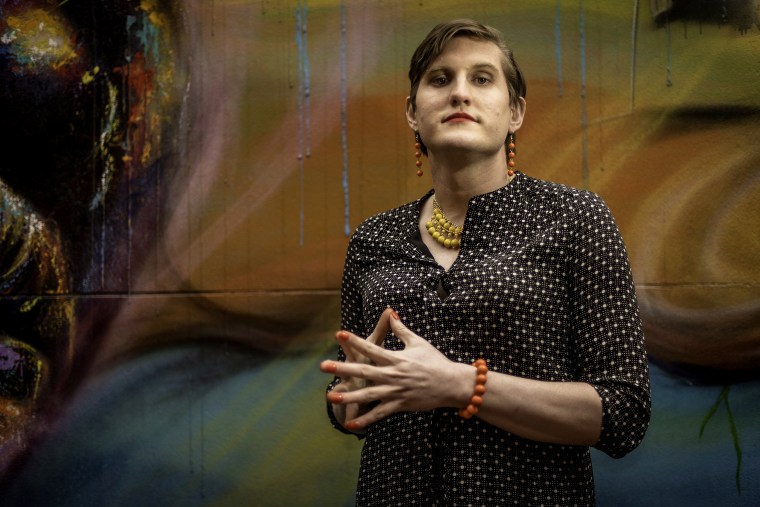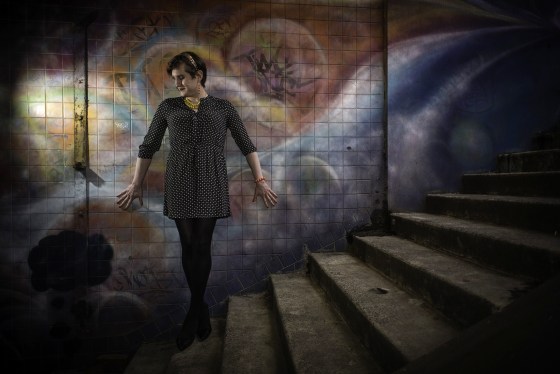When I came out as a transgender woman, clothes were admittedly the last thing on my mind. There were (and continue to be) more pressing questions: legal and medical issues, documentation, hormones and relationships, to name just a handful. In fact, the thought of wearing female-identifying clothing was terrifying. Incredibly alluring, yes, but terrifying, too.
I have known since I was a young child that I didn’t feel “male” on the inside, but I had successfully avoided buying female-identifying clothing for 30 years. I’m not sure if this was due in part to my fear that giving in to temptation would result in me loving my female presentation too much to go back. Perhaps I was worried that I would be disappointed when I looked in the mirror; that I would feel less than perfect in my desired natural form as a woman. If perfection does exist, I thought, it was probably only in my mind’s closet. Better to dream of myself as a woman than see it in reality with the varnish stripped away.
If perfection does exist, I thought, it was probably only in my mind’s closet. Better to dream of myself as a woman than see it in reality with the varnish stripped away.
The weekend after I came out, one of my closest friends treated me to breakfast and surprised me with a shopping spree and style consultant. For the better part of a day, our little band hit up a half dozen stores to paint my body with various cuts and fabrics. I have a tall frame, an athletic build and a traditionally masculine face. A past girlfriend would occasionally tease me for a profile that might fit on an old Roman coin. And here I was, years later, attempting to discover my inner Aphrodite.
Fashion, unsurprisingly, takes research. After some trial and error, we found sleeves that worked for my upper body — and decided plunging necklines were a bit too much to start. My legs — thank god — are just the right type of muscular and toned to look gorgeous in a sexy pencil skirt. Meanwhile, certain dresses betrayed my lack of an hourglass shape. Tops that were too sheer had an awkwardness that could not be saved by camisoles, much to my chagrin, but blouses with mandarin collars looked unusually flattering on my build.

The stylist and my friend put me through a crash course on the basics of female-identifying clothing, and I was delighted to see an unexpected albeit slightly jarring similarity between women’s fashion and case law. You see, some of my favorite undergraduate courses were in Constitutional law. For two semesters, I wrote a series of five-page papers responding to legal questions our class studied. Building complex theoretical arguments was exhilarating and empowering in the nerdiest way. But what if this love for figuring out legal puzzles could also help me navigate my new (and true) presentation?
I was terrified of women’s clothing because I had spent my life overthinking what it meant to look like a woman. In other words, if I don’t look like Cinderella, what’s the point in even trying? How will the world accept me as a woman, I wondered, if I can’t pull off a brave imitation of Holly Golightly or Beyonce? It’s not that women aren’t infinitely complex and varied, falling across the full spectrum of gender presentations. Rather, I was afraid of not being accepted as a woman because I didn’t fit the historical, traditional and popular perceptions of what it means to present as a “woman” — not an uncommon concern among transgender women.

But in the weeks after that shopping spree, the truth slowly dawned on me: An outfit is an argument you present to the world, and the best arguments are built on a combination of precedent and truth. Similarly, the best outfits have a hybrid logic connecting history and authenticity. If half the fun of fashion is understanding its traditional rules, then surely the other half must be breaking them — in ways that variously flatter and inspire and delight us.
Dark stockings pair well with a typical pencil skirt, but why not shake things up by wearing cream heels? I may get looks, but who cares? This is my argument to the world: I look classy as hell in dark stockings and cream heels — your opinions be damned.
I had spent years assuming fashion is defined by others, that those of us outside the traditional must rely on what others dictate and translate for us. This was a mistake.
I had spent years assuming fashion is defined by others, that those of us outside the traditional must rely on what others dictate and translate for us. This was a mistake. How thrilling to discover that fashion is in fact a tapestry of things stitched together out of various states of our own truth and comfort.
Today I live in what could be called a state of imperfect authenticity in the clothes I wear. But while fashion may be a process, I now feel more real and wonderful than any vision of perfection that’s existed in my dreams.
Case closed.
Charlotte Clymer is a transgender Army veteran and writer based in Washington, D.C.
